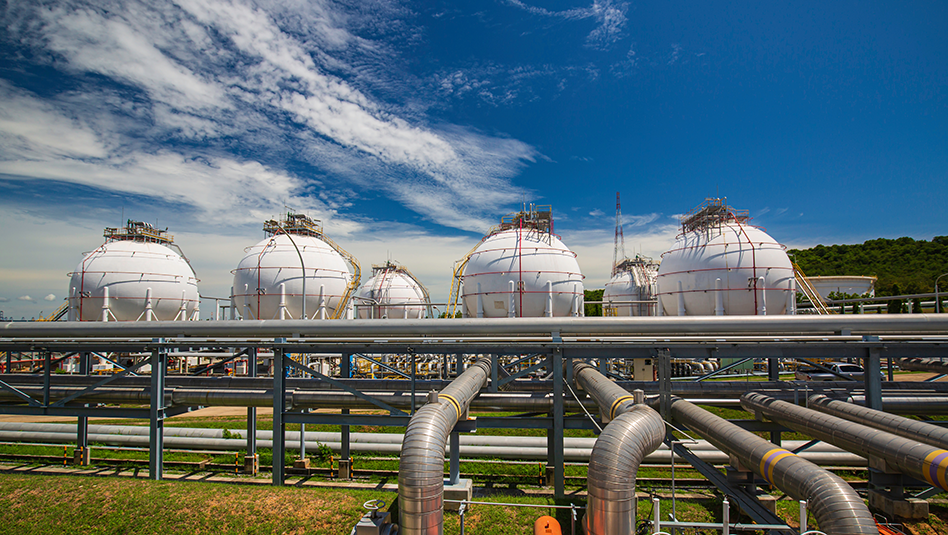Running out of gas
The Philippines’ main source of natural gas is depleting soon and the country’s power needs in the future are at stake. As the country moves away from dirty coal, liquefied natural gas seems to be the most viable option for now.

The Malampaya gas field has been the Philippines’ main source of indigenous natural gas since 2001. It has been instrumental in catering to the electricity needs of Luzon especially Metro Manila, and in keeping electricity prices low.
However, its gas supply is completely getting depleted, and while there are ongoing efforts to explore the possibility of extending its life, the reality is its natural gas reserves are bound to be exhausted, thereby posing challenges to meet the country’s power needs in the future. What will keep the lights on in Luzon in Malampaya’s absence?
Scenario 1: More coal reliance
Currently, the Philippines heavily relies on coal, which, in 2021, produced 58% of the total gross power generated. Moreover, 68% of the country’s supply of coal is imported, with 98% coming from Indonesia. Since last year, Indonesian coal has been on the rise.
Moreover, the depreciation of the peso and the increase in excise tax for coal from PHP 10/metric ton (MT) to PHP 150/MT triggered higher electricity prices in recent months. This means if Malampaya runs out of gas and the country imports more coal at its current market conditions, we would see more elevated electricity prices in the future.

Prices of both coal and LNG are likely to go up as demand surges globally.
Higher coal consumption also means higher greenhouse gas emissions given that coal is considered a “dirty fuel”. Fortunately, the country is committed to its move towards a cleaner energy mix. It has already issued a moratorium for new coal plants, and has been gearing towards cleaner energy sources.
Scenario 2: LNG as “transition fuel”
As the country aims to transition to a cleaner energy mix and considering Malampaya’s imminent depletion, the Philippines is targeting to import LNG to fill the gap. LNG is basically natural gas cooled down and converted to liquid for easy transport, eliminating the need for construction of pipelines especially if the country is to source natural gas overseas.
In the Philippine Energy Plan (PEP) for 2020-2040, the Department of Energy (DoE) is planning to substantially boost the shares of cleaner energy sources in the energy mix which can be achieved by tapping more renewable energy sources supported by natural gas-driven power plants.
In such a transition, natural gas plays a key role as it fills in the gap where renewables may fall inadequate given the former’s flexible easy-to-start-up-and-shut-down capacity while simultaneously lowering carbon emissions. There is likewise support from the national government as it envisions the country becoming the LNG hub in Southeast Asia given its strategic position in the region.
More private sector investments in the downstream LNG sector (import terminals, regasification facilities, etc.) are encouraged by the DoE, and there’s also the House Bill 3031 (Downstream Natural Gas Industry Development Act) which, when passed into law and implemented effectively, would spur the development of the regulatory framework and support mechanisms that will enable an efficient and effective LNG industry in the country.
Higher energy prices still on the horizon
Whether the country moves forward with its transition to LNG or moves backward to opt for coal, there will still be higher energy prices in the future given the current global energy landscape. Both coal and LNG prices have surged since 2021 and are foreseen to remain at elevated levels, especially as countries recover, needing more energy to support their economies. Moreover, countries in Asia are also transitioning to LNG, with China being the top LNG importer in 2021.
Nevertheless, some factors make LNG more attractive than coal, such as the cheaper capital cost per kilowatt-hour, tax incentives, government support, and lower emissions. The top LNG-producing country, Qatar, has already signified that it would raise production to meet global demand. More importantly, as Malampaya nears depletion, LNG, as the country’s substitute and transition fuel, is the most feasible option for now.
INA CALABIO is a Research & Business Analytics Officer at Metrobank in charge of the bank’s research on industries. She loves OPM and you’ll occasionally find her at the front row at the gigs of her favorite bands.







 DOWNLOAD
DOWNLOAD




 By Ina Calabio
By Ina Calabio